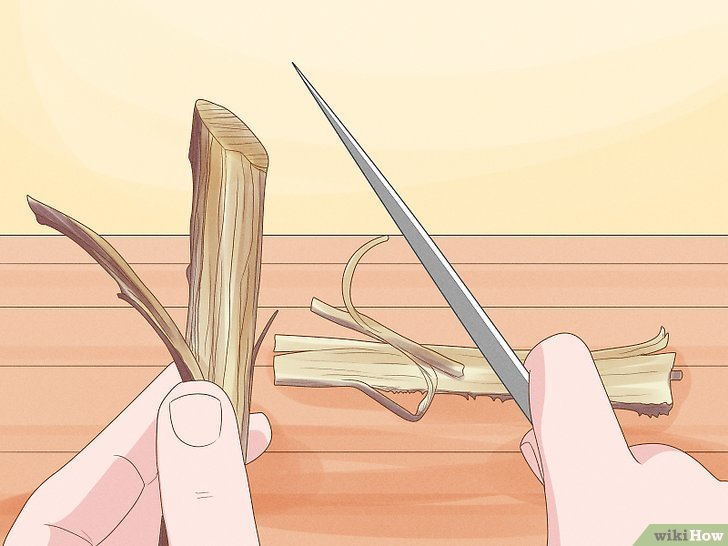The mimosa tree, also known as silk tree, is a beautiful ornamental tree native to Asia. It produces lovely pink pom pom-like flowers that have a delicate sweet scent. Beyond its ornamental virtues the bark of the mimosa tree has been used for centuries in traditional Chinese medicine.
Mimosa bark contains beneficial plant compounds and has anti-inflammatory, analgesic, and antioxidant properties. It has been used to treat wounds, muscle pain, headaches, insomnia, and stress. Today, mimosa bark is growing in popularity in the western herbal medicine tradition.
If you have access to a mimosa tree, harvesting some of its bark can allow you to make your own mimosa bark remedies at home. Here is a step-by-step guide to sustainably harvesting mimosa bark.
When to Harvest
The best time to harvest mimosa bark is in early spring, right before the tree leafs out. This is when the bark is most pliable and easy to peel. Avoid harvesting during the heat of summer or when the tree is stressed.
Selecting Branches
When harvesting you want to be as minimally invasive as possible to the tree. Look for small, pencil-sized branches and shoots that can be pruned without causing harm to the overall shape and health of the mimosa tree.
Use clean, sterilized pruning shears to cut off selected small branches and shoots. Make cuts at a 45 degree angle right above a node or bud. Take only a few branches from each large limb and avoid overharvesting from one area.
Peeling the Bark
Once branches have been cut, the next step is peeling off the outer bark. You want thin, papery strips of the exterior bark. The inner bark is too moist and flexible to use.
Hold the cut end of the branch securely on a hard surface. Take a sharp paring knife and slice down the length of the branch to shave off long strips of the outer bark. Apply minimal pressure so you only remove the papery layers.
Rotate the branch as needed to peel off strips around the entire circumference. The goal is to harvest as much of the useful outer bark as possible without cutting too deep into the inner bark.
Drying the Bark
Freshly peeled mimosa bark needs to be dried before it can be used for herbal preparations. here are two options for drying:
Air Drying
- Cut peeled bark strips into 1-2 inch pieces
- Lay pieces out in a single layer on mesh screens or baking sheets
- Place in a warm, dry, well-ventilated area out of direct sunlight
- Allow to dry for 1-2 weeks until thoroughly brittle and dry
Oven Drying
- Cut peeled bark strips into 1-2 inch pieces
- Arrange in a single layer on a baking sheet
- Place in oven on lowest setting, 170°F or below
- Dry for 6-12 hours, checking frequently
- Remove immediately once dry and brittle
The slower the drying process, the better it preserves the aromatic compounds in mimosa bark. Store fully dried bark in airtight containers out of sunlight until ready to use.
Making Mimosa Remedies
Once you’ve harvested and dried mimosa bark, there are many herbal preparations you can make:
-
Tea – Simply add 1-2 teaspoons of dried bark pieces to 8 ounces of hot water and allow to steep 15-20 minutes. Strain and drink.
-
Tincture – Soak bark in vodka or other clear liquor for 4-6 weeks, then strain and store in amber dropper bottles.
-
Powder – Grind dried bark into a fine powder using a coffee/spice grinder to use in capsules.
-
Wash or compress – Make a strong tea and apply externally to skin as a wash, or soak cloth in tea and apply as a compress.
Always properly identify any tree before harvesting. Only harvest from trees you have permission to gather from, and never harvest in protected natural areas. By following these simple steps, you can sustainably forage for mimosa bark and experience the benefits of this special tree medicine.
Frequently Asked Questions
What does mimosa bark look like?
Mimosa bark has a tan papery exterior that peels off in long strips. The inner bark is reddish, flexible, and moist. Only harvest the outer papery layers.
What does mimosa bark taste and smell like?
Mimosa bark has a bitter, astringent taste. It has a faint almond-like scent when crushed or peeled. The flowers have a sweet, fruity aroma.
What are the uses for mimosa bark?
Traditionally used for inflammation, pain, wound healing, anxiety, stress, and insomnia. Modern uses focus on anxiety, depression, muscle spasms, and insomnia.
Is it safe to harvest mimosa bark?
Yes, harvesting thin strips of outer bark does not usually harm the tree. Avoid overharvesting from one area and do not take inner bark. Only take what you need.
When is mimosa bark ready for harvest?
Harvest in early spring when sap is flowing and bark is most pliable. Bark is thinner and easier to peel during this period.
Can I use other parts of the mimosa tree?
Yes, the flowers and leaves also have uses, but the bark is most widely utilized. Use for tea, tinctures, elixirs, and more.
How do I dry and store mimosa bark?
Slowly air dry or use lowest oven setting. Store fully dried bark in airtight containers in a cool, dark place. Keeps 1-2 years.
With the proper ethical harvesting techniques, mimosa bark can be a sustainable backyard herbal remedy. Follow these guidelines to respectfully wildcraft from this multipurpose ornamental tree.
removing medicinal mimosa bark from a harvested branch
- A Complete Guide to Caring for Yuki Cherry Blossom Shrub - January 23, 2025
- Identifying Red Hot Poker Seeds: What to Look For When Harvesting Torch Lily Pods - January 23, 2025
- A Complete Guide to Harvesting Evening Primrose Seeds - January 23, 2025

